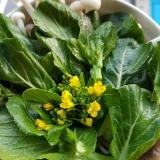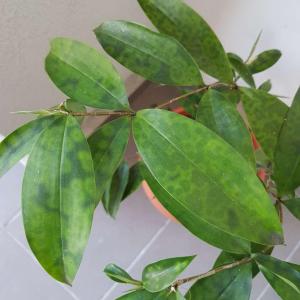文章
Miss Chen
2018年06月20日

To be healthy, people need vitamins, nutrients and antioxidants. By protecting cells against the damage of free radicals, antioxidants can help protect serious illnesses like cancer and heart disease, according to the National Institute of Health. Dangerous free radicals can be produced by the body as it breaks down food, or encountered in toxins like cigarette smoke, but a diet with antioxidant-rich vegetables can help combat these killers, leading to better health.
Beans

Many types of beans are rich in antioxidants.
Beans, be they kidney, pinto, lima or another variety, are good sources of antioxidants. Studies at Tufts University show a single cup of red beans contains over 13,000 antioxidants, and black beans, even though lowest in the legume family by the same study, still have over 4,000 antioxidants. Beans are also low in fat and cholesterol, but high in protein and fiber, making them filling, healthy and good for proper digestion. To incorporate beans into a diet, try tossing them in salad, blending them into a dip making them into a main dish like bean enchiladas.
Tomatoes

Pizza sauce made from tomatoes is a good source of the antioxidant lycopene.
Tomatoes derive their bright red color from the antioxidant lycopene and are one of the best sources of this free-radical fighting nutrient, according to the American Cancer Society. People who consume a diet high in tomatoes "appear in some studies to have a lower risk of certain types of cancer, especially cancers of the prostate, lung and stomach" says the society, which adds that studies have shown consuming cooked tomatoes is the most beneficial to health. Furthermore, including a healthy fat, like olive oil, with a lycopene source makes it easier for the body to absorb. Tomatoes are also high in vitamin C, potassium and other nutrients as well.
Kale

Kale is a variety of lettuce that's high in nutrients.
A type of cabbage, kale is a green leaf vegetable with curly edges and a study at Tufts University showed that it contains more than 11,000 antioxidants. According to the World's Healthiest Foods website, kale is particularly high in flavonoids and carotenoids, types of antioxidants which are believed to help fight cancer. World's Healthiest Foods also states these groups of antioxidants can help raise the amount of certain nutrients in the blood, such as beta-carotene and lutein, which keep the heart and eyes healthy. Kale is also high in vitamin K and essential fatty acids, which have powerful anti-inflammatory properties.
Eggplant

Antioxidants in eggplant can help prevent cell damage.
The chubby purple eggplant has been shown to contain high amounts of important antioxidants in government tests. The Agricultural Research Service conducted studies that showed eggplants are high in chlorogenic acid, "one of the most powerful antioxidants produced in plant tissues" according to the agency. A type of phenolic compound, chlorogenic acid, among other antioxidants, is produced by vegetables to protect themselves from infection and stress, and Harvard University states these antioxidants prevent cell damage, protect against infection and can help control cholesterol.
Beans

Many types of beans are rich in antioxidants.
Beans, be they kidney, pinto, lima or another variety, are good sources of antioxidants. Studies at Tufts University show a single cup of red beans contains over 13,000 antioxidants, and black beans, even though lowest in the legume family by the same study, still have over 4,000 antioxidants. Beans are also low in fat and cholesterol, but high in protein and fiber, making them filling, healthy and good for proper digestion. To incorporate beans into a diet, try tossing them in salad, blending them into a dip making them into a main dish like bean enchiladas.
Tomatoes

Pizza sauce made from tomatoes is a good source of the antioxidant lycopene.
Tomatoes derive their bright red color from the antioxidant lycopene and are one of the best sources of this free-radical fighting nutrient, according to the American Cancer Society. People who consume a diet high in tomatoes "appear in some studies to have a lower risk of certain types of cancer, especially cancers of the prostate, lung and stomach" says the society, which adds that studies have shown consuming cooked tomatoes is the most beneficial to health. Furthermore, including a healthy fat, like olive oil, with a lycopene source makes it easier for the body to absorb. Tomatoes are also high in vitamin C, potassium and other nutrients as well.
Kale

Kale is a variety of lettuce that's high in nutrients.
A type of cabbage, kale is a green leaf vegetable with curly edges and a study at Tufts University showed that it contains more than 11,000 antioxidants. According to the World's Healthiest Foods website, kale is particularly high in flavonoids and carotenoids, types of antioxidants which are believed to help fight cancer. World's Healthiest Foods also states these groups of antioxidants can help raise the amount of certain nutrients in the blood, such as beta-carotene and lutein, which keep the heart and eyes healthy. Kale is also high in vitamin K and essential fatty acids, which have powerful anti-inflammatory properties.
Eggplant

Antioxidants in eggplant can help prevent cell damage.
The chubby purple eggplant has been shown to contain high amounts of important antioxidants in government tests. The Agricultural Research Service conducted studies that showed eggplants are high in chlorogenic acid, "one of the most powerful antioxidants produced in plant tissues" according to the agency. A type of phenolic compound, chlorogenic acid, among other antioxidants, is produced by vegetables to protect themselves from infection and stress, and Harvard University states these antioxidants prevent cell damage, protect against infection and can help control cholesterol.
1
1
求助
CarlosB2408
2018年06月14日

Need help! Does anyone know what type of succulent this is? Thank you!!😁 #identification
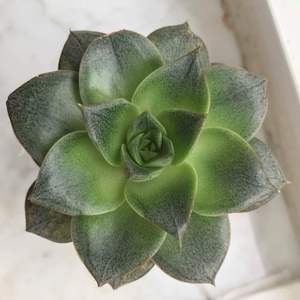

0
0
Fion:Echeveria purpsorum(大和锦)😁
求助
CiaraCrearions
2018年06月14日

Can sormone help me identify tbese two? Someome said that the one on tbe left was Echeveria Lipstick but I dont think so....




0
0
Fion:You're welcome.😁😁😁
CiaraCrearions:@Fion thank you so much! This is super helpful!
Fion:The one on the left is Sedum Adolphii Firestorm(红日),and the other one is Sedeveria Letizia(蒂亚)😁
求助
Katy Appleton
2018年06月05日

Someone help me identify this succulent!
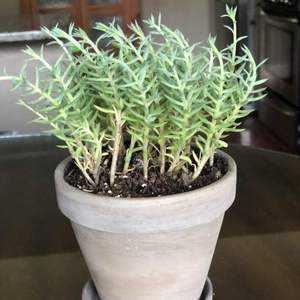
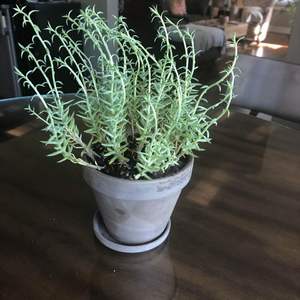


0
0
Fion:佛甲草(Sedum lineare Thunb)
求助
Devisha Mehta
2018年05月21日

what's wrong with these?? can someone plesse help
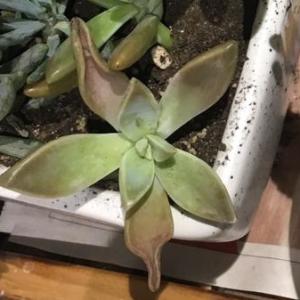
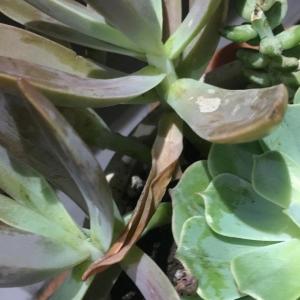
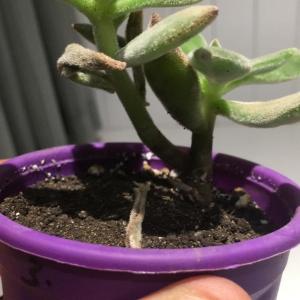



0
0
meriunkat:@Devisha Mehta you'll do great :) I hope your plants get better as well and thanks.
Devisha Mehta:@meriunkat I'll give them time to adapt. this is the 1st batch I've bought. I hope to give them all the care and love. Thanks a lot for your help, hope your plants are well now.
Fion:To much water and lack of sunlight.Sunlight for at least 3 hours everyday and do not use glass.You can try to watering them once a month.
meriunkat:@Devisha Mehta thats great, maybe they still need time to adjust to there new home
i have some succulents i bought in Los Angeles and apon returning back home they have dry leaves that fall even after i have provided them with everything they need.
Do you fertilize?
Devisha Mehta:@meriunkat my succulents are inside receiving indirect sunlight. And not more than 2 hours of direct light. And are placed in an aerated environment. I figured sudden exposure to direct light might shock them.
显示更多
文章
Miss Chen
2018年05月14日

Potatoes are easy to grow, and the plants can be highly productive if grown under the best conditions. Oklahoma gardeners are fortunate to have a climate well-suited to growing potatoes, and starting your plants at the right time will help make sure your crop is a bountiful one.
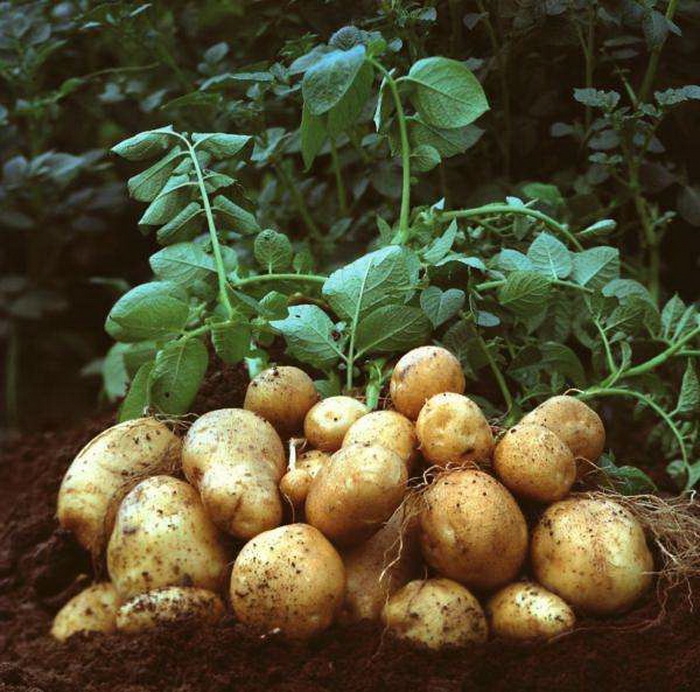
Time Frame
Potatoes are considered cool-season vegetables. They are not particularly sensitive to frost, and can be planted earlier than more tender garden plants. You can plant potatoes from mid-February to mid-March. If you live in southern Oklahoma, you should plant during the earlier portion of this range.
Considerations
Potatoes grow best in soil that is well aerated, moist and well drained; avoid compacting the soil. A pH between 5.0 and 5.5 is ideal. Potatoes grow well in sunny conditions, but excessive heat and lack of moisture reduce yield.

Sweet Potatoes
Sweet potatoes are less hardy than regular potatoes, and should be planted between May 1 and June 20.

Time Frame
Potatoes are considered cool-season vegetables. They are not particularly sensitive to frost, and can be planted earlier than more tender garden plants. You can plant potatoes from mid-February to mid-March. If you live in southern Oklahoma, you should plant during the earlier portion of this range.
Considerations
Potatoes grow best in soil that is well aerated, moist and well drained; avoid compacting the soil. A pH between 5.0 and 5.5 is ideal. Potatoes grow well in sunny conditions, but excessive heat and lack of moisture reduce yield.

Sweet Potatoes
Sweet potatoes are less hardy than regular potatoes, and should be planted between May 1 and June 20.
0
0
成长记
Lucky Coyote
2018年05月10日

today on variety pot hour: a transplant is planned for a majority of these babies :/ hopefully my new soil mix will help them out
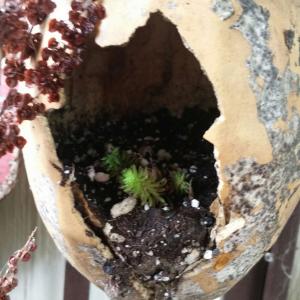
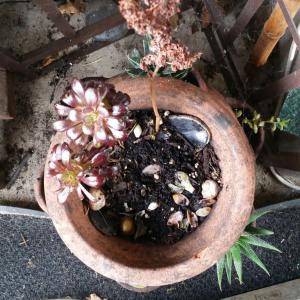
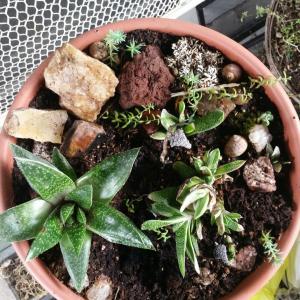
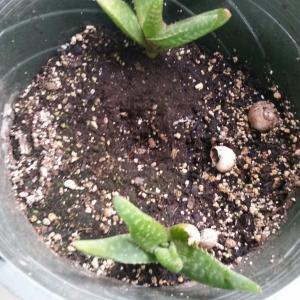




0
0
求助
Lucky Coyote
2018年05月09日

I need help IDing this cactus :( its spines are really soft and don't break when you pet it, if that helps
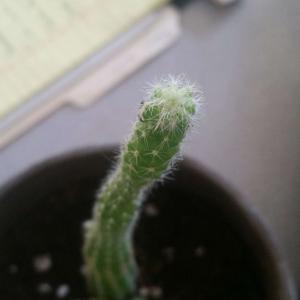
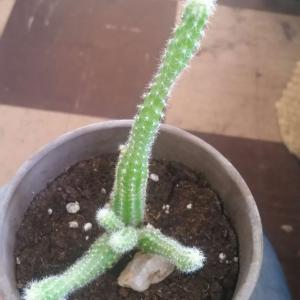


0
0
文章
Miss Chen
2018年05月09日

Description: This herbaceous perennial plant is about 3-10" tall, producing from its rootstock both basal leaves and fertile shoots with cauline leaves. The basal leaves are separate from the fertile shoots; they help to store energy for next year's fertile shoots. A fertile shoot consists of a single flowering stalk with a whorl of 3 leaves. Each leaf is up to 3" long and across, but palmately cleft into 3-5 narrow lobes with dentate teeth along the margins. The basal leaves have a similar appearance to the cauline leaves; both types of leaves are greyish green to medium green and largely hairless. The central stalk is greyish green to medium green, glabrous or slightly pubescent, terete, and unbranched. This stalk terminates into a short raceme of white flowers that becomes longer as it matures. This inflorescence is rather floppy; the flowers open up and become more erect in the presence of sunshine on warm spring days.
Each flower is about ½" across when fully open, consisting of 4 predominately white petals, 4 green or purple sepals, several stamens with conspicuous yellow anthers, and a single pistil. The petals are lanceolate-oblong and sometimes tinted with pink or light purple. The sepals are oblong and shorter than the petals. The slender pedicels are at least as long as the flowers; they are light green to purplish green and terete. The blooming period occurs during mid-spring and lasts about 2 weeks. The flowers are quite fragrant. Each flower is replaced by an elongated seedpod that has a short beak (i.e., a silique); this seedpod is held more or less erect. The seeds are arranged in a single row within the seedpods; they are ovoid and somewhat flattened in shape. The root system produces fleshy rhizomes that are jointed and knobby; they are parallel to the surface of the ground and fairly shallow. In addition to these rhizomes and their secondary roots, the root system produces small fleshy tubers. This plant often forms vegetative colonies from its spreading rhizomes; it also reproduces by seed.

Cultivation: Its easiest to start plants from pieces of the rhizome. These should be planted a little below the surface of the ground in an area with sparse ground cover that receives shade during the summer. Cutleaf Toothwort develops quickly and it is one of the earlier spring wildflowers of woodlands. The foliage turns yellow and fades away by the end of spring. This plant typically grows in dappled sunlight before the trees leaf out; it prefers moist to mesic conditions and a rich loamy soil with decaying leaves.
Range & Habitat: The native Cutleaf Toothwort is a common plant that occurs in nearly every county of Illinois (see Distribution Map). Habitats include deciduous mesic woodlands, floodplain woodlands, wooded bluffs, and upland savannas. The presence of this species in a woodlands indicates that its soil has never been plowed under or subjected to heavy construction activities. However, this species can survive some disturbance caused by occasional grazing and less disruptive activities of human society. When the introduced Alliaria petiolata (Garlic Mustard) invades a woodlands, this is one of the spring wildflowers that declines in abundance.

Faunal Associations: The nectar of the flowers attracts both long-tongued and short-tongued bees, including honey bees, bumblebees, mason bees (Osmia spp.), cuckoo bees (Nomada spp.), Halictid bees (Halictus spp., Lasioglossum spp.), and Andrenid bees (Andrena spp.). Less often, the nectar of the flowers attracts early spring butterflies and Bombylius major (Giant Bee Fly). Short-tongued bees also collect pollen from the flowers. Caterpillars of the butterflies Pieris napi oleraceae (Mustard White) and Pieris virginiensis (West Virginia White) feed on the foliage of Dentaria spp. (Toothworts); however, the former butterfly has not been observed in Illinois since the late 19th century, while the latter butterfly is found in areas that are SE of the state. Other insect feeders include the flea beetles Phyllotreta bipustulata and Phyllotreta zimmermanni. The tubers of Toothworts were a minor food source of Ectopistes migratorius (Passenger Pigeon); this bird species became extinct in the United States during the early 20th century.

Photographic Location: An upland savanna in McLean County, Illinois, and a mesic woodland in Urbana, Illinois.
Comments: Cutleaf Toothwort is the only native Dentaria sp. (Toothwort) in Illinois. Other species of Toothwort can be found in areas to the east and north of Illinois, including Indiana. The species Dentaria diphylla (Two-Leaved Toothwort) has been observed in Kane County, Illinois, where it is probably adventive. This latter species has two cauline leaves on each flowering stalk, while Cutleaf Toothwort usually has three. Both the basal and cauline leaves of Two-Leaved Toothwort have broader lobes than those found on the leaves of Cutleaf Toothwort. Some authorities have merged the Toothworts into the genus Cardamine (Bitter Cress), in which case the scientific name of Cutleaf Toothwort is Cardamine concatenata.
Each flower is about ½" across when fully open, consisting of 4 predominately white petals, 4 green or purple sepals, several stamens with conspicuous yellow anthers, and a single pistil. The petals are lanceolate-oblong and sometimes tinted with pink or light purple. The sepals are oblong and shorter than the petals. The slender pedicels are at least as long as the flowers; they are light green to purplish green and terete. The blooming period occurs during mid-spring and lasts about 2 weeks. The flowers are quite fragrant. Each flower is replaced by an elongated seedpod that has a short beak (i.e., a silique); this seedpod is held more or less erect. The seeds are arranged in a single row within the seedpods; they are ovoid and somewhat flattened in shape. The root system produces fleshy rhizomes that are jointed and knobby; they are parallel to the surface of the ground and fairly shallow. In addition to these rhizomes and their secondary roots, the root system produces small fleshy tubers. This plant often forms vegetative colonies from its spreading rhizomes; it also reproduces by seed.

Cultivation: Its easiest to start plants from pieces of the rhizome. These should be planted a little below the surface of the ground in an area with sparse ground cover that receives shade during the summer. Cutleaf Toothwort develops quickly and it is one of the earlier spring wildflowers of woodlands. The foliage turns yellow and fades away by the end of spring. This plant typically grows in dappled sunlight before the trees leaf out; it prefers moist to mesic conditions and a rich loamy soil with decaying leaves.
Range & Habitat: The native Cutleaf Toothwort is a common plant that occurs in nearly every county of Illinois (see Distribution Map). Habitats include deciduous mesic woodlands, floodplain woodlands, wooded bluffs, and upland savannas. The presence of this species in a woodlands indicates that its soil has never been plowed under or subjected to heavy construction activities. However, this species can survive some disturbance caused by occasional grazing and less disruptive activities of human society. When the introduced Alliaria petiolata (Garlic Mustard) invades a woodlands, this is one of the spring wildflowers that declines in abundance.

Faunal Associations: The nectar of the flowers attracts both long-tongued and short-tongued bees, including honey bees, bumblebees, mason bees (Osmia spp.), cuckoo bees (Nomada spp.), Halictid bees (Halictus spp., Lasioglossum spp.), and Andrenid bees (Andrena spp.). Less often, the nectar of the flowers attracts early spring butterflies and Bombylius major (Giant Bee Fly). Short-tongued bees also collect pollen from the flowers. Caterpillars of the butterflies Pieris napi oleraceae (Mustard White) and Pieris virginiensis (West Virginia White) feed on the foliage of Dentaria spp. (Toothworts); however, the former butterfly has not been observed in Illinois since the late 19th century, while the latter butterfly is found in areas that are SE of the state. Other insect feeders include the flea beetles Phyllotreta bipustulata and Phyllotreta zimmermanni. The tubers of Toothworts were a minor food source of Ectopistes migratorius (Passenger Pigeon); this bird species became extinct in the United States during the early 20th century.

Photographic Location: An upland savanna in McLean County, Illinois, and a mesic woodland in Urbana, Illinois.
Comments: Cutleaf Toothwort is the only native Dentaria sp. (Toothwort) in Illinois. Other species of Toothwort can be found in areas to the east and north of Illinois, including Indiana. The species Dentaria diphylla (Two-Leaved Toothwort) has been observed in Kane County, Illinois, where it is probably adventive. This latter species has two cauline leaves on each flowering stalk, while Cutleaf Toothwort usually has three. Both the basal and cauline leaves of Two-Leaved Toothwort have broader lobes than those found on the leaves of Cutleaf Toothwort. Some authorities have merged the Toothworts into the genus Cardamine (Bitter Cress), in which case the scientific name of Cutleaf Toothwort is Cardamine concatenata.
0
0
求助
Lucky Coyote
2018年05月05日

Could someone help me ID this? it's quite hardy (I've been told that it's unkillable) and came from Bend, Oregon as a gift
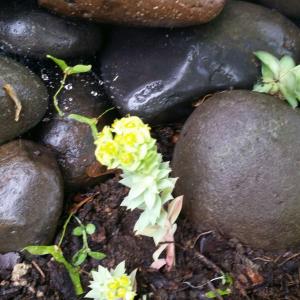

0
0
成长记
Gweez
2018年05月05日

I took these two beauties from mom's garden. Need help with ID, I think they are Graptopetalum paraguayense. Next photos are where they came from, the difference of color is due to sunlight but they're the same plant.

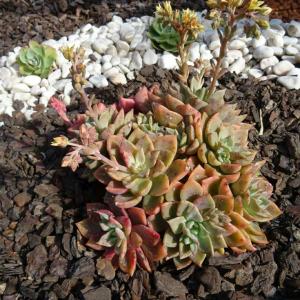
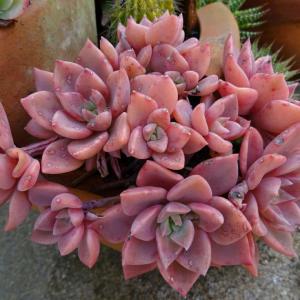
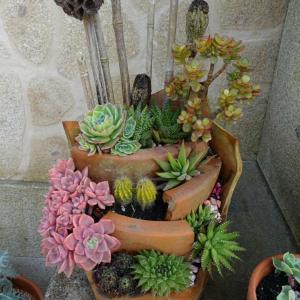




2
0
Catarina ZS:It looks like a Graptopetalum Victor Kane. I bought one these week and I didn't know the difference from a paraguayensis :-)
Gweez:@Lucky Coyote Well yes, It could be, in fact It looks a lot like Vera higgins more than any Graptopetalum. I guess they're some variety of graptosedum because of the thickness of the leaves. Thanks for help!
Lucky Coyote:because of the second picture, coul it be a Vera Higgins?
求助
Lucky Coyote
2018年04月28日

Can someone help me ID this?
I've had this cactus for almost a year, and it's already this tall.
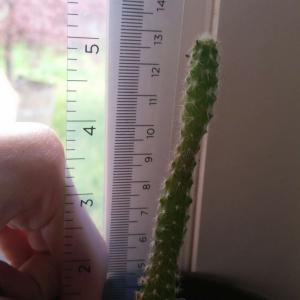
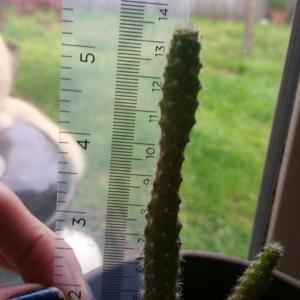
I've had this cactus for almost a year, and it's already this tall.


0
0
Lucky Coyote:@Catarina ZS okay, thank you so much 😊 I'll keep looking, then, but thank you.
Catarina ZS:Xero Hellsing, a look at some pictures and I compared them. I don think it is an Echinopsis because of the thorn position. It is not as two parallel lines made of dots. Your cactus have a different disposition of those thorns
My English is not so good :-) Sorry
Lucky Coyote:@Catarina ZS I did some googling off of your lead, and it leaf me to a species called 'Echinopsis chamaecereus,' does that seem similar to this one?
Catarina ZS:It looks like a Mamilaria. It happens the same to me, they are thin and small.
成长记
ilul yusuf
2018年04月18日

I now added "Nameless beauty who needs help" in my "garden"


0
0
ilul yusuf:@mikepark420 thanks so much!
mikepark420:wandering jew


